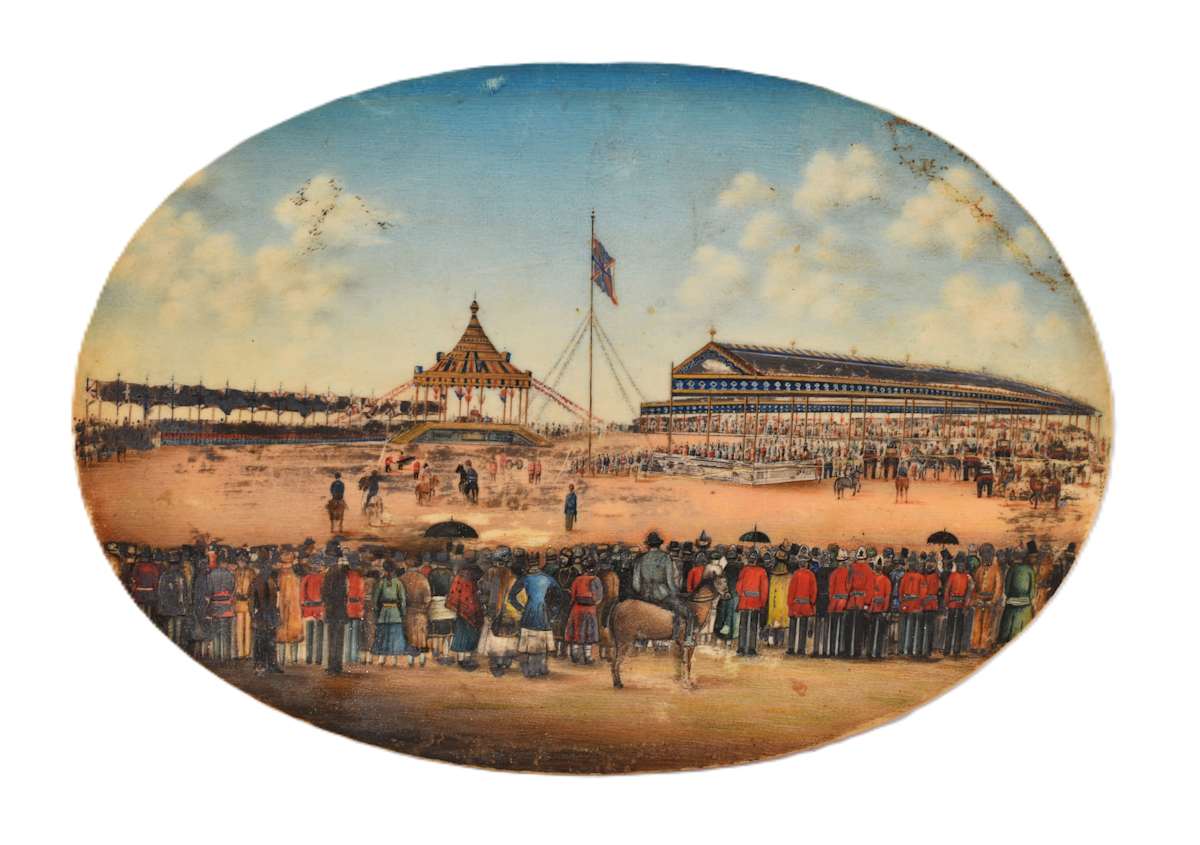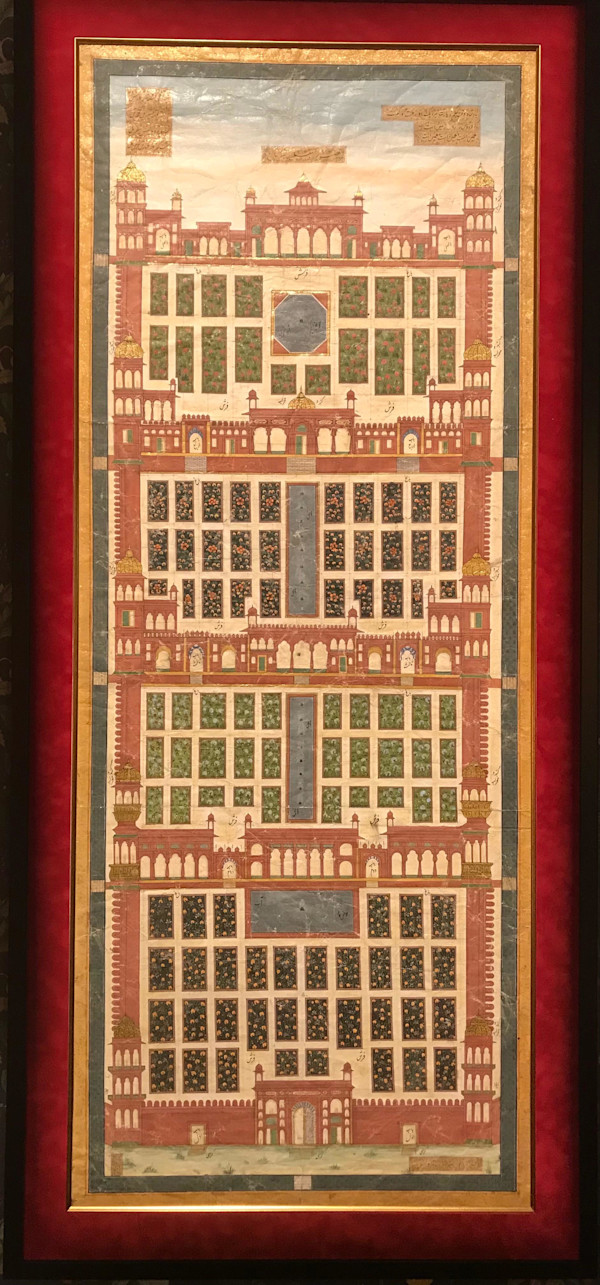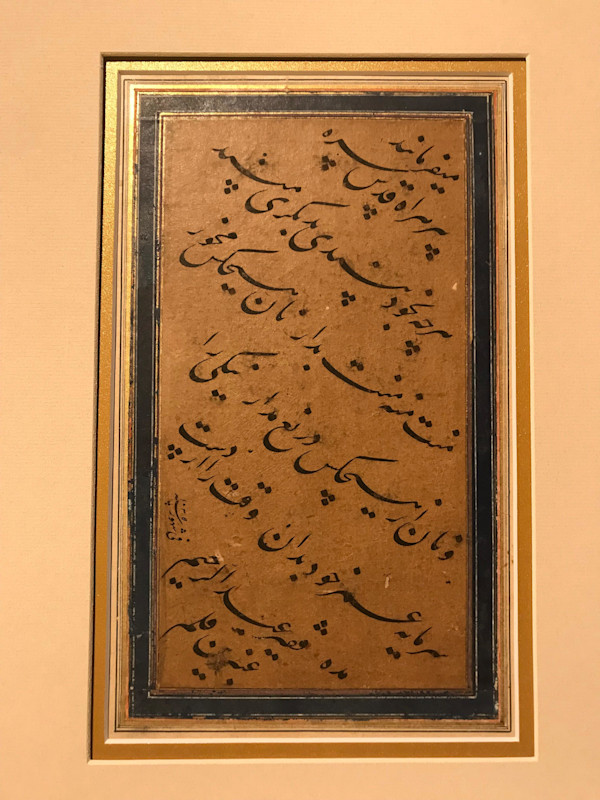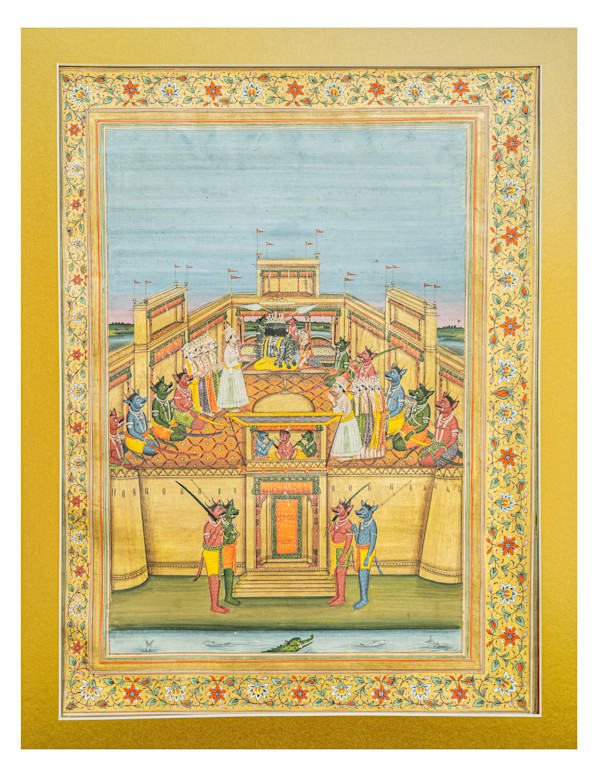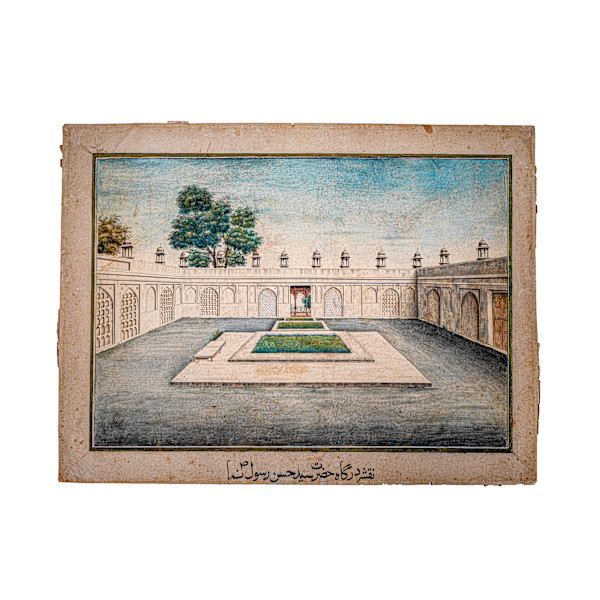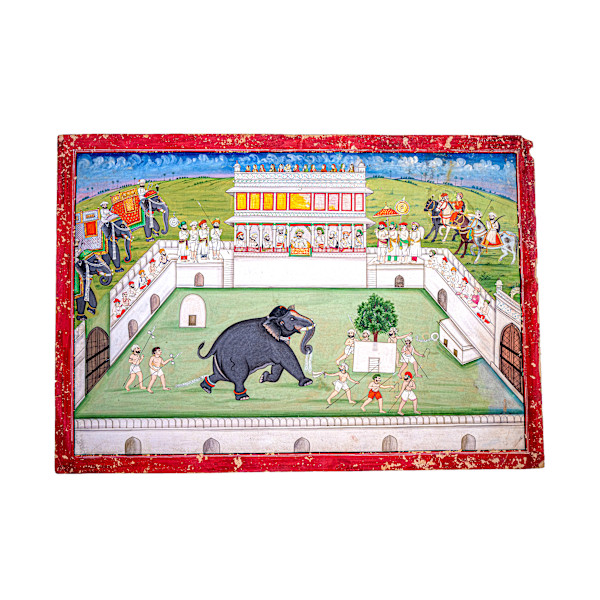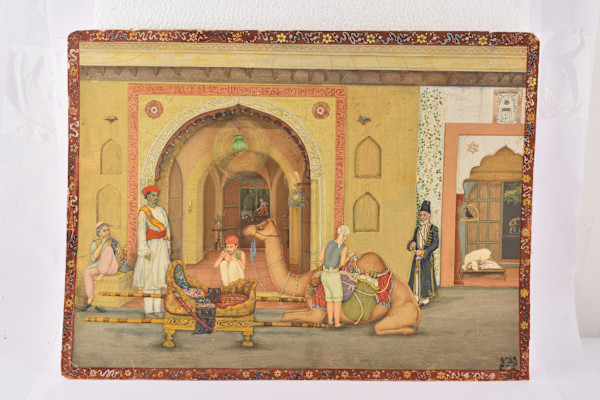Ivory painting in India flourished in the 18th century, gaining particular prominence in Delhi between 1840 and 1880, largely catering to the tastes of the British market. A rare and striking example from this period is an oval ivory plaque depicting the 1877 Delhi Durbar, commemorating Queen Victoria’s proclamation as Empress of India. This meticulously rendered piece vividly portrays a grand assembly of spectators, officials, and military personnel, subtly yet powerfully illustrating the colonial hierarchies of the time. Majestic pavilions adorned with flags, including the Union Jack, stand as unmistakable symbols of British imperial authority. The artist’s masterful use of vibrant colors on the delicate ivory surface, along with a sweeping panoramic composition, captures the scale, ceremony, and spectacle of the event. This rare artwork stands as a testament not only to the technical finesse of ivory painting but also to the complex artistic and cultural interplay of the colonial era.
- Subject Matter: Painting
- Collections: Painting

